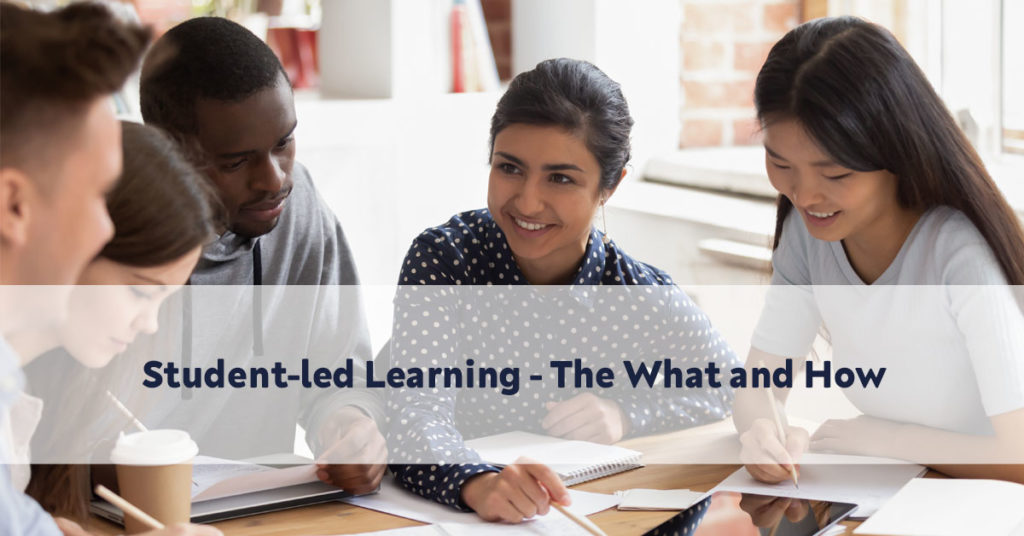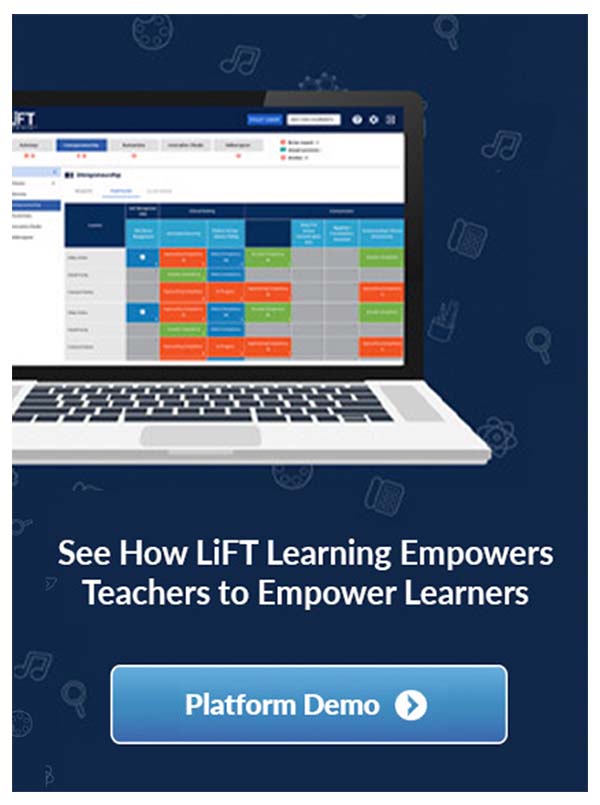Student-led Learning – The What and How


One of my early attempts at student-led learning was through an extracurricular program outside of the core classes I was responsible for teaching. The inspiration was rooted in introspection. I was experiencing more behavior issues in my core classes and, upon reflection, recognized why. I wasn’t involving students in the creation of our learning experience and it was boring.
I wanted to experiment. While it was easy to get going with the students, it was harder to make the argument to our Dean of Curriculum that this would be a High School credit-worthy experience. We were curious what it would be like if we, the students and I, identified desirable skills and criteria together and just saw where it went with a few ‘non-negotiables’:
- Had to have an essential question (which could change over time)
- Feedback and dialogue were important
- Need to show evidence of learning in some form to an authentic audience
There was this excitement and energy in our meetings. Gradually ideas emerged from students, albeit amidst slight apprehension between both parties as we looked to each other for leadership and permission. We’d ideate on whiteboards. We’d call businesses in real-time. We’d run small pitches to random people walking down the hallway. What I knew early on is that students were into it, what I didn’t know is what it was called.
What is student-led learning?
Teacher-led learning and student-led learning are exactly as they sound.
A teacher-led class puts the focus and the ownership of the learning experience on the teacher. They control the subject, the environment, and the pacing, and are responsible for the student’s needs. Quite often, teacher-led learning is didactic and associated with the acquisition of content knowledge assessed in traditional formats.
A student-led class shifts this dynamic.
A student-led class can often appear loud, busy, and chaotic. Learning experiences are often self-paced and designed around interests, where teachers coach and inspire students to find passion in the subject matter. Students are self-aware and advocate for their needs and have “voice and choice” in content, process, and product — giving students agency in their learning. Student-led learning is often experiential in nature and focused on the acquisition of skills displayed through a portfolio of artifacts.
Why shift, why now?
More schools and districts are prioritizing student-led practices. This change from teacher-led to student-led did not occur overnight, but the movement has been accelerated in recent years. Digital natives who were once on the receiving end of the traditional industrial model of education are now taking leadership positions in schools, business, and government.
They are shaping the future and they’ve grown up with instant access to endless amounts of information at all times. The ability to collaborate, communicate, think creatively, and solve problems is the new currency. Schools are aligning to provide students with experiences that develop the skills necessary to succeed in this new workplace environment.
Organizations like the XQ institute, New School Venture Fund, and Education Redesign Lab have been researching and funding initiatives to redefine the norms of teaching and learning. Networks of schools like High Tech High, League of Innovative Schools, and New Tech Network are continuing to grow tall while rooted in student-led practices all in the name of continued change.
How to get started
Start with the skills. Choose an area in your curriculum or within your school where you have some room to play — a sandbox where you can create alongside students. Once there, identify skills that you think are worth developing. Be reasonable in the number of skills, and be collaborative in the process.
Don’t be afraid to pause at this point, too. Ground the students in a common definition of the skill and how it can be shown across context.
It can’t be overstated, having the learners feel as though they own and value the skill and see it as important to their future is vital to learner engagement and agency.
Once agreed upon, let interest and passion drive learners in different directions. Create norms and expectations to serve as bumper lanes on your journey, and if nothing else, be sure to make it real. For us, that meant a target date where we were inviting family and friends as well as community members to view our ‘exhibit hall’ of learner journeys. As a team, we were hosting an event and we all had a hand in its success.
White knuckle driving
The first go-round with student-led learning was a moderate success with many lessons learned. More than anything, as a young professional I was learning to let go. I let go of micromanaging the learning experience, tracking points, and artificial deadlines, of control over the culture of our classroom.
Student-led learning provides students with greater responsibility for their learning and helps to ease the transition from the classroom to life after school. This approach gives young people a voice and a greater sense of agency. We owe it to our students to make the shift, and it starts with the first step.

Looking for a bit more? Check out Dr Katie Martin, author of Learner-Centered Innovation, in her article that provides 4 ways to create a learner-centered classroom. Also, the team at Teton Science Schools offers great advice on successfully designing a learning environment and why you should do it, and as always Edutopia has a wealth of resources including this piece on creating a student-led culture change.

As a New Hampshire educator at the forefront of the competency-based movement, Joey taught Cultural Geography in grades 9-12 at Pinkerton Academy. He was awarded New Hampshire’s Teacher of the Year in 2014 before taking a leadership role as Director of Education at Education First. At EF, he was responsible for improving the learning experience of participants in travel programs through accreditation, strategic partnerships, and product development.

